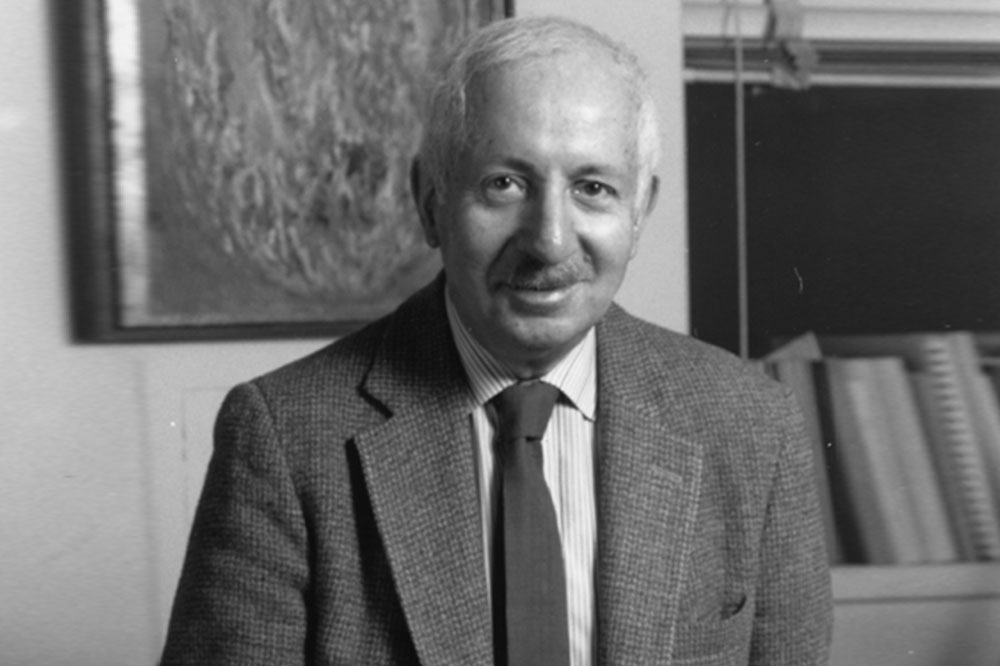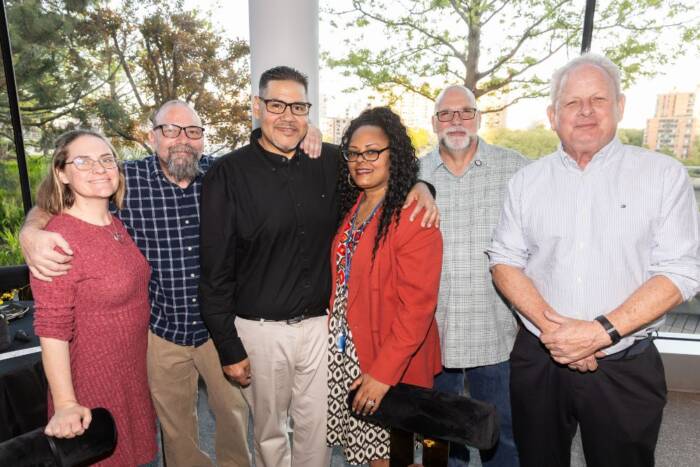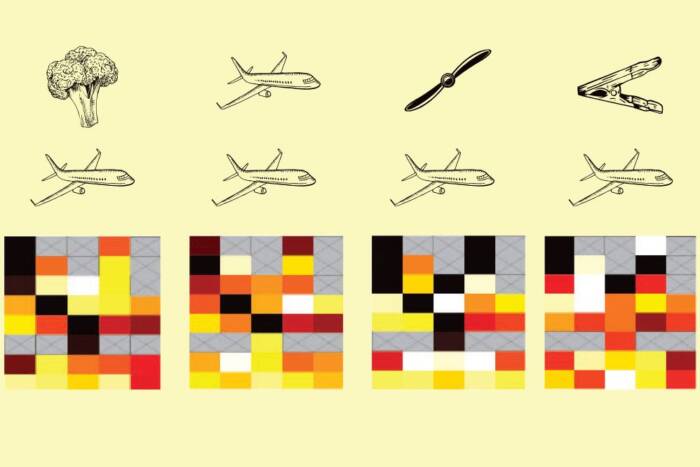Philip Siekevitz, pioneer in cell biology, dies at 91
by JOSEPH BONNER

Philip Siekevitz was a passionate New Yorker. Through a nearly century-long life, he was an active participant in the city’s cultural, music, art and architecture scenes — and, especially, in its science. Professor Emeritus Philip Siekevitz, a member of The Rockefeller University community for over 30 years, died in Manhattan on Saturday, December 5, of a stroke. He was 91.
Born in Philadelphia, Pennsylvania, on February 25, 1918, Dr. Siekevitz received a B.S. in biology from the Philadelphia College of Pharmacy and Science in 1942 and spent the following three-plus years in the Army Air Force. He received a Ph.D. in biochemistry from the University of California, Berkeley, in 1949, and then joined the Huntington Laboratories of Harvard University at the Massachusetts General Hospital as a Public Health Service Fellow.
Dr. Siekevitz was associated with a number of significant contributions in the field of cell biology. As one of the first National Institutes of Health Postdoctoral Fellows at Harvard, he and his colleagues demonstrated for the first time that protein synthesis could be studied using radioactive amino acids on isolated cell components called organelles. He then joined Van R. Potter’s laboratory at the University of Wisconsin, Madison, where he worked from 1951 to 1954 as an oncology fellow and where he made important contributions in the control of energy metabolism in mitochondria, the organelle responsible for energy production in the cell.
In 1954 Dr. Siekevitz joined the laboratory of Keith Porter and George E. Palade at Rockefeller as an assistant in cytology. He worked on the isolation and description of ribosomes, the major sites of protein synthesis in the cell, and of the endoplasmic reticulum, intracellular structures on which ribosomes reside. Drs. Siekevitz and Palade’s research on pancreatic cells led to a greater understanding of protein synthesis and protein secretion in cells. In addition, they investigated the organization, function and differentiation of several intracellular membranes in an effort to determine how the many membrane components function together as a unit, and how they are differentially formed. Dr. Siekevitz was appointed associate professor at Rockefeller in 1959 and professor in 1966. His later work was devoted to the study of events occurring at the neural synapse on the level of intracellular structures. He was coauthor, with Ariel G. Loewy, of the first textbook on cell biology, titled Cell Structure and Function, published in 1963. Dr. Siekevitz retired from Rockefeller in 1988.
“Phil was a brilliant scientist who very much enjoyed doing his own experiments rather than delegating them to postdocs or students,” says Günter Blobel, head of the Laboratory of Cell Biology and former postdoc in the joint Palade/Siekevitz lab.
In addition to his research, Dr. Siekevitz was an advocate of the social responsibilities of scientists. He believed that it is the duty of those engaged in basic research to inform the public about the potential risks involved. A founding member and treasurer of the New York Scientists Committee for Public Information, he wrote extensively on science and public policy, and his articles appeared in The Nation, The New York Times and Nature.
Dr. Siekevitz was a member of numerous scientific societies including the National Academy of Sciences. He was an honorary fellow of the New York Academy of Sciences, serving as its president in 1976, and a fellow of the American Association for the Advancement of Science. He was a consultant to several scientific organizations including the Panel on Molecular Biology of the National Science Foundation, the National Research Council, the National Cancer Program of the National Cancer Institute and the International Cell Research Organization of UNESCO.
Dr. Siekevitz received two honorary degrees, one in 1971 from his alma mater, which also honored him with its Alumni Award in 1973, and the other from the University of Stockholm in 1974.


